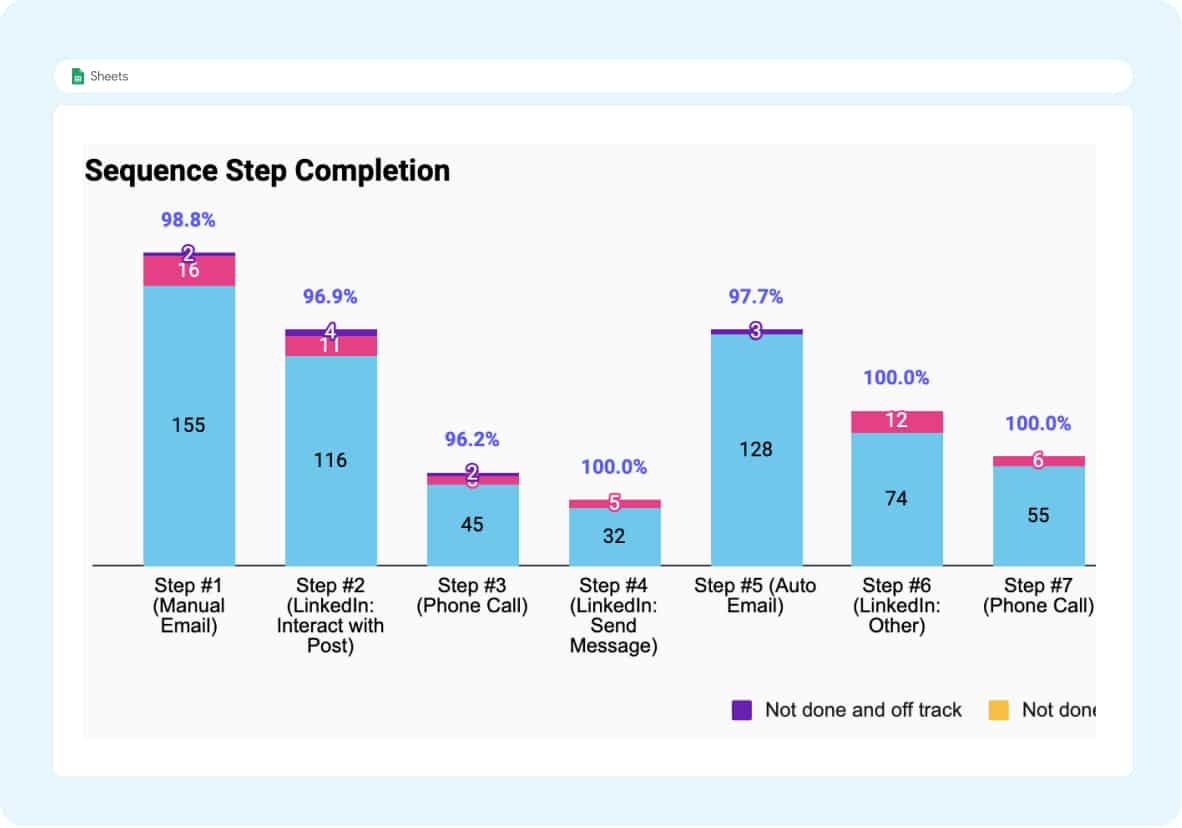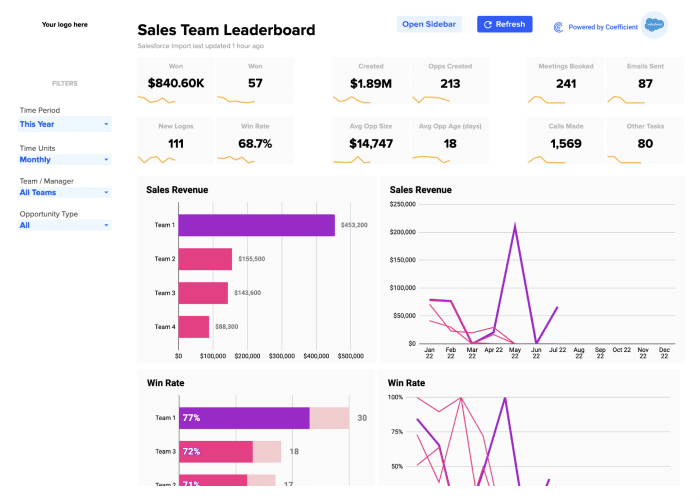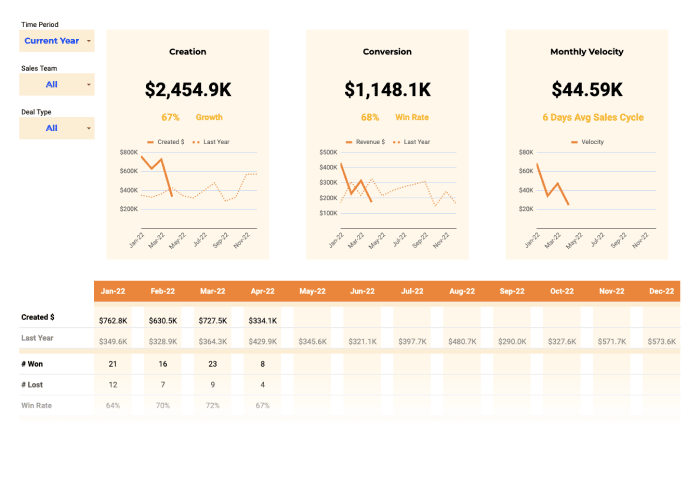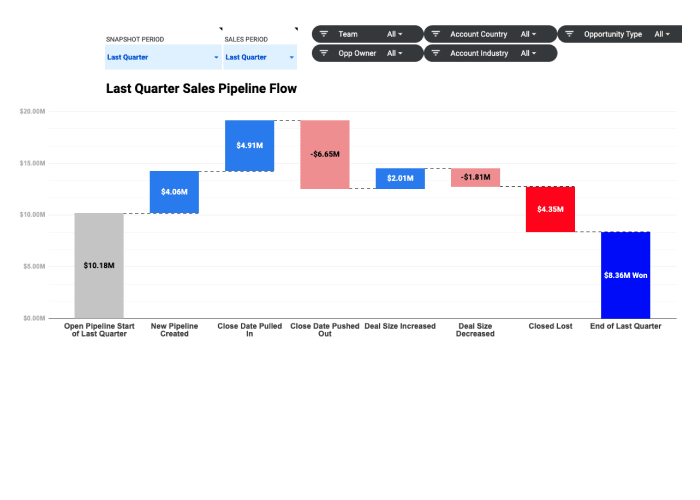Monitor and optimize your email sequences, all from your spreadsheet.
Streamline your email marketing with our Outreach Sequence Performance Dashboard. Our new dashboard allows you to track all your email sequences and tasks, directly within Google Sheets.
The Outreach Sequence Performance Dashboard empowers you to supercharge your email marketing operation in many ways:
- Instantly access high-level metrics for your email funnel, sequence steps, and open tasks
- Personalize the dashboard with ease: adjust data imports, swap out data fields, and add custom Outreach fields
- Use Google Sheets filters to refine your dashboard globally and focus on specific Outreach sequences
- Import additional Outreach data, or integrate data from Salesforce, HubSpot, MySQL, and more for a comprehensive view
Download our free Outreach Sequence Performance Dashboard now to monitor and optimize your email sequences directly from Google Sheets.
Outreach Sequence Best Practices
With inboxes overflowing and noise levels at an all-time high, standing out is more challenging than ever. Embrace these best practices to ensure your outreach doesn’t just blend in – but truly resonates.
- Quality Over Quantity: Instead of sending out mass emails, focus on crafting personalized messages. A well-researched, individualized outreach can have a significantly higher success rate than generic blasts.
- Engaging Subject Lines: Your subject line is the first thing recipients see. Make it count by keeping it concise, relevant, and intriguing enough to prompt an open.
- Hyper-Personalization: Go beyond just using the recipient’s name. Reference specific details, such as a recent post they made or a mutual connection, to show genuine interest and effort.
- ‘F’-Shaped Messages: Structure your email in an ‘F’ pattern. Start with a longer, engaging first line, followed by shorter sentences, and conclude with a compelling call to action. This format aligns with natural reading patterns.
- Diversify Channels: Don’t limit yourself to just email. Incorporate other platforms like LinkedIn, InMail, or even Twitter to reach your prospects where they’re most active.
- Originality is Key: In a sea of similar messages, originality can make you stand out. Whether it’s a unique introduction, a funny GIF, or a thought-provoking question, find ways to differentiate your outreach.
- Avoid Generic Templates: While templates can be time-saving, they can also be easily spotted and ignored. Craft your messages, ensuring they’re tailored to each recipient.
- Follow-Up: Persistence pays off. If you don’t get a response to your initial message, send 3-4 follow-up emails spaced out over time. Remember to offer value in each interaction.
- Add Value: Whether it’s a piece of content, a solution to a problem, or a beneficial opportunity, ensure your outreach offers something of value to the recipient.
- Clear Call to Action: Every outreach should have a purpose. Whether you’re seeking a meeting, feedback, or another form of engagement, be clear about what you want the recipient to do next.

Sales Email Outreach Metrics to Track in 2023
Here’s a concise overview of the essential email metrics that businesses should monitor to gauge the effectiveness of their outreach campaigns.
- Open Rate: This metric measures the percentage of email recipients who opened your mail. It’s crucial because if recipients aren’t opening your emails, they’re not seeing your message. The average open rate should be between 15-20%.
- Conversion Rate: This is the rate at which users perform a specific action that could lead them to become a customer, such as subscribing to an email newsletter or making a purchase.
- Bounce Rate: Represents the number of emails that haven’t reached the subscriber’s inbox. A high bounce rate can lead to your emails being blocked by email service providers.
- Click-Through Rate (CTR): This metric measures the percentage of people who click on a link in your email to reach your sales page.
- Time Spent Viewing Email: Some tools can measure the time recipients spend viewing an email, indicating their level of engagement.
- Opt-Out Rate: The percentage of people who unsubscribe from your email list or mark it as spam.
- Engagement Over Time: Track how recipient engagement metrics change over a specified period.
- Email Sharing/Forwarding Rate: Percentage of recipients who shared the email with others.
- List Growth Rate: How quickly your email list is growing.









